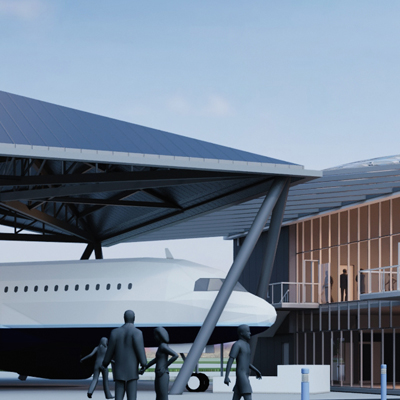Low-level skies are a relatively unused and high potential space for public services, personal and commercial uses: movement of urgent medical supplies, police operations, flying taxis and shopping deliveries.
The UK Government’s aviation strategy green paper has highlighted the social and economic benefits from modernising the airspace. That means developing a flexible, open access space - for use by everyone, both new forms of air transport like UAVs and Aston Martin’s concept Urban Air Mobility (UAM) vehicle (Volante, developed in partnership with Cranfield Aerospace Solutions, Cranfield University and Rolls-Royce) alongside conventional light aircraft - that’s built around a safe operational infrastructure.
Key Facts
The National Beyond visual line of sight Experimentation Corridor (NBEC) is a sixteen-kilometre Beyond Visual Line of Sight test and development facility that starts at the Cranfield Airport Air Traffic Zone and extends to the Twinwoods Aerodrome near Bedford. Formed through a partnership between Cranfield University, Blue Bear, Thales and Vodafone, the NBEC is a national asset that will support the journey to the creation of ultimately a ‘Unified Traffic Management’ system enabling the operation of UAV, UAM vehicles and light aircraft to fly safely in “unsegregated” air space within both urban and rural areas across the UK.
Regulations currently require UAVs to operate within visual line of sight of the operator at all times relying on observers to maintain situational awareness. A broad range of technologies are now being proposed to provide full situational awareness of UAVs so that it is possible to know exactly where each vehicle is, their direction, their intention and timeline for arrivals, so eliminating the need for observers. In this way, both technologies and most effective regulations can be worked out hand in hand - overcoming the two biggest challenges in opening up the skies: ensuring resilience and systems integration. Crucially, the system has to ensure constant continuity: coping with the variety of vehicles, ensuring they all communicate with the ground and each other; that the system can deal with technology failure and with evolution as old technology is phased out and the new comes in.
The experimentation corridor will be operational from 2020, when trials of technologies will be ongoing, including the involvement of Cranfield’s Global Research Airport and Digital Aviation Research and Technology Centre (DARTeC) and its industrial partners. Learning from NBEC will be applied to the Oxford-Cambridge Arc as part of its development as a model of smart infrastructure delivering real-world services and opportunities.
